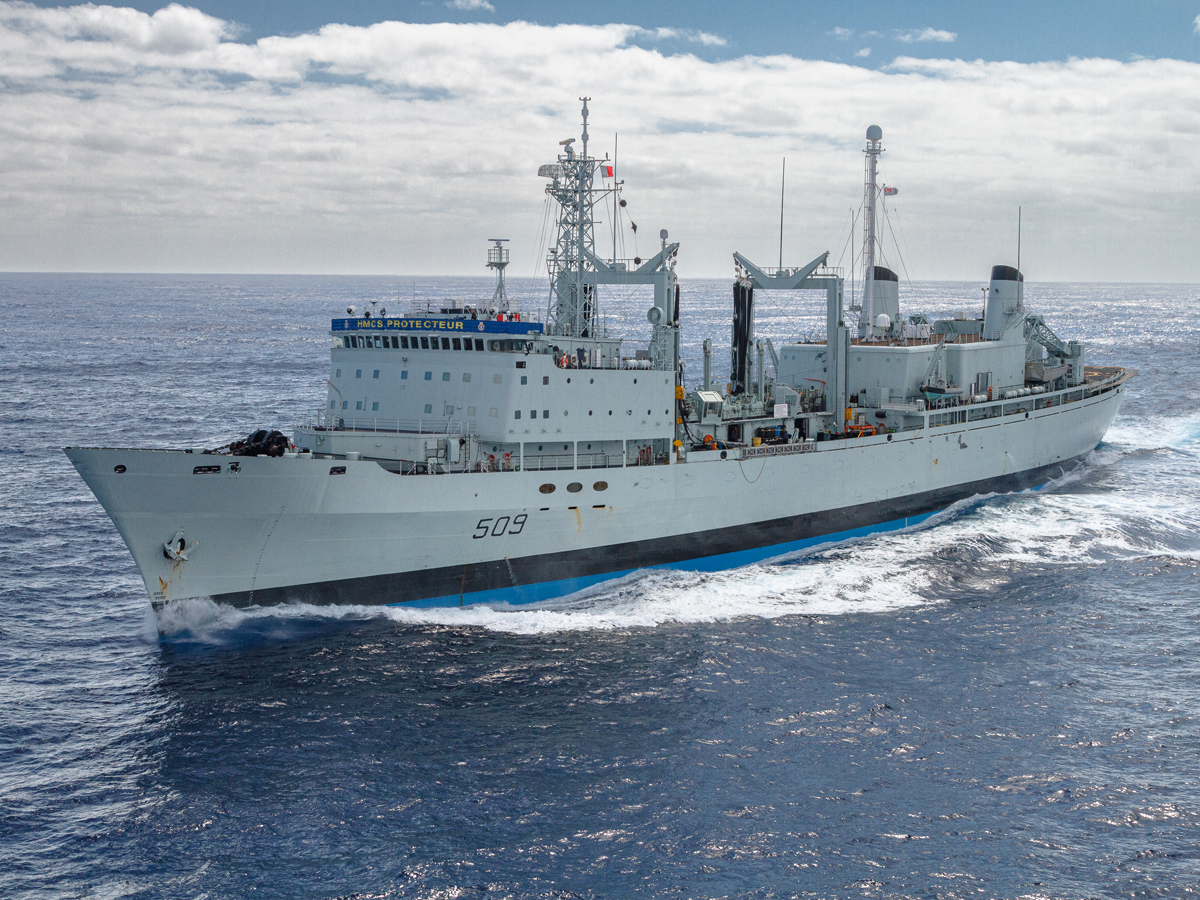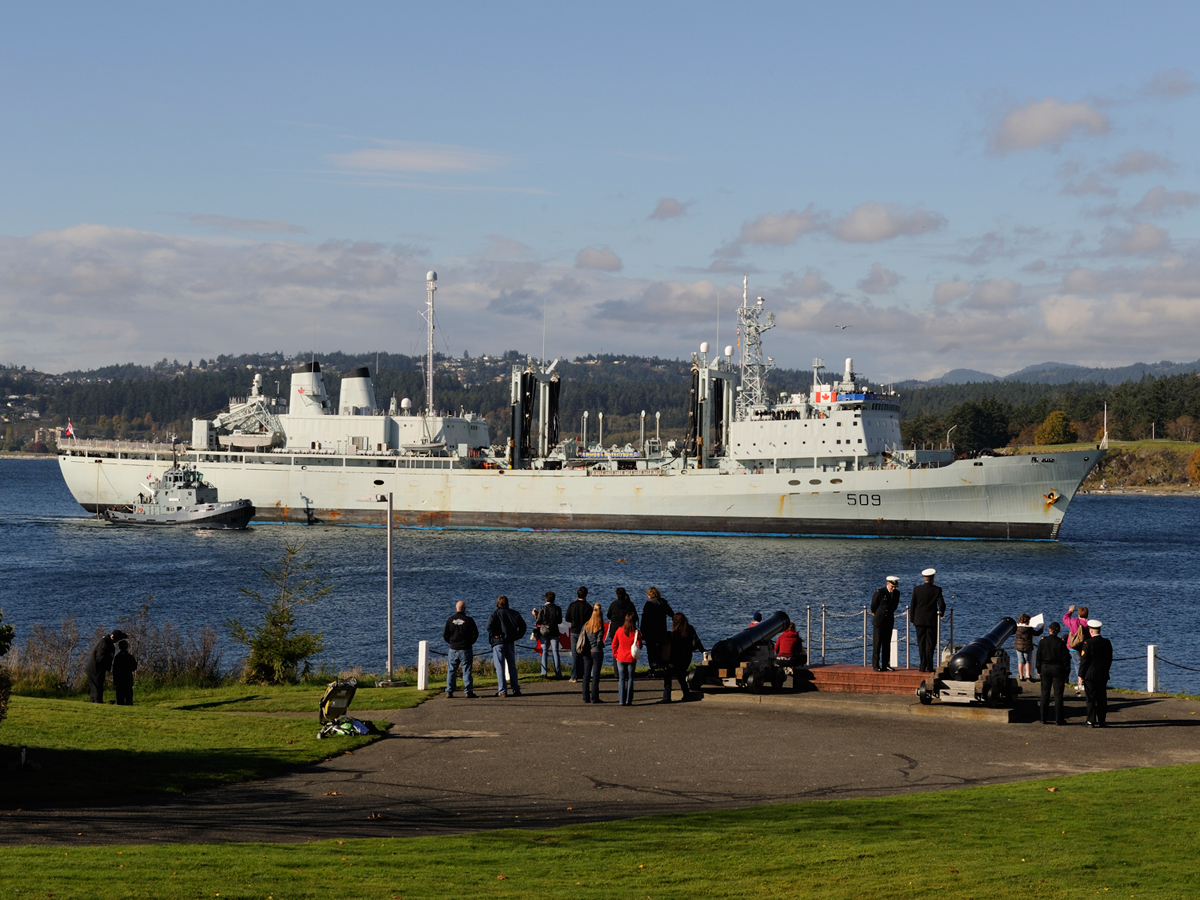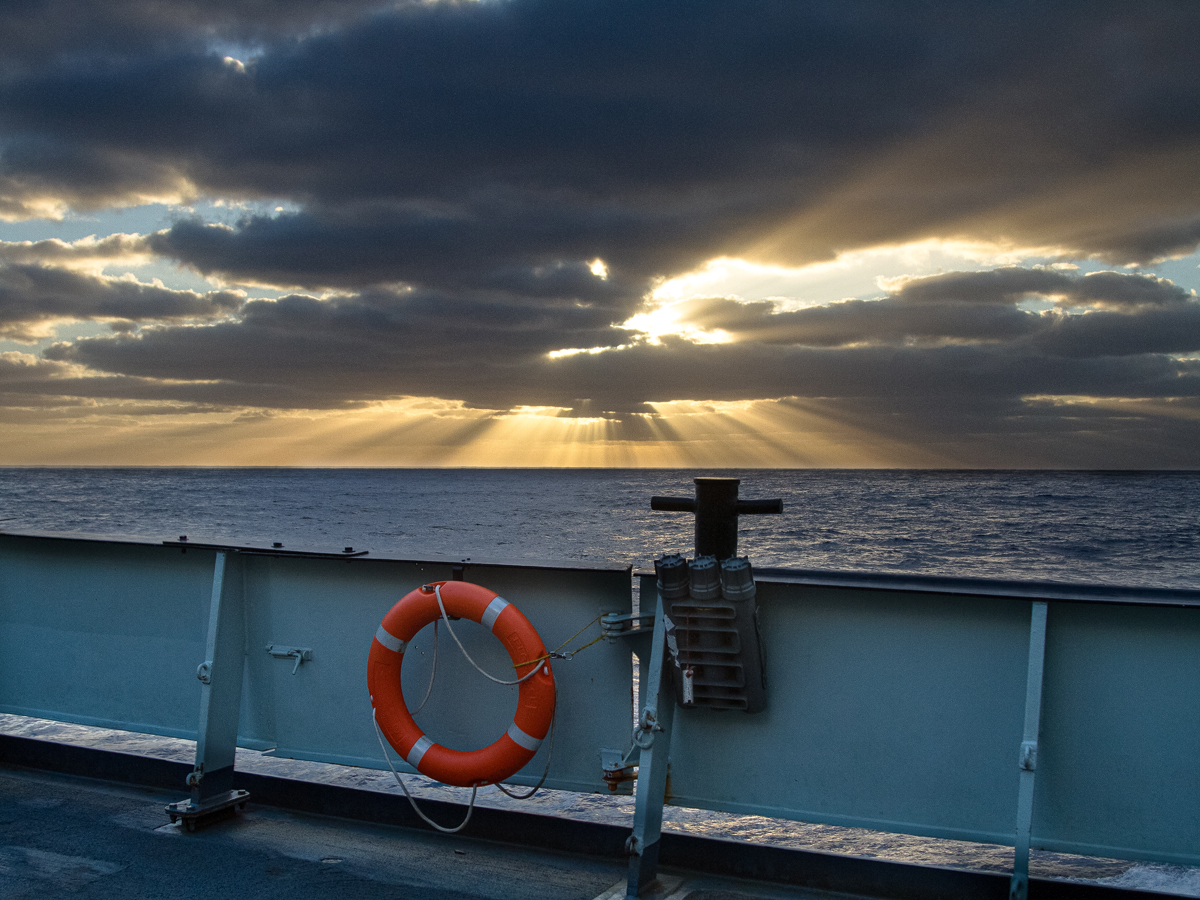Memories from HMCS Protecteur
By Lookout Production on Feb 27, 2024 with Comments 0

HMCS Protecteur. Photo: Jonathon Wade Kehler
The following is written by Gordon Kijek, who joined the crew aboard HMCS Protecteur during the onboard fire in February 2014. He was part of a ‘Tiger Cruise’ – when friends and family sail back onboard a ship to its home port. This seven-day Tiger Cruise ended more dramatically than any before it. Gordon passed away in 2023 but left the following account to be shared.
The day we joined the ship, it was doing a resupply at sea with an American-guided missile destroyer, the USS Michael Murphy.
In mid-afternoon on Day 2, a sailor asked me if I’d like to tour the ship’s engine room. I agreed and joined a group of civilians as we descended into the lowest areas of this great ship.
The engine room went down 40 feet below the water line. We toured the entire three floors of incredibly complex machinery and experienced the ever-present extreme heat and overpowering noise. I could only see the guide’s mouth moving at certain points but heard nothing.
 At around 7 p.m. that evening, my son Dean and I were in the Chief and Petty Officers’ Mess when we heard the loud CLANG, CLANG, CLANG of an alarm followed immediately by a loud announcement, ‘Fire, fire, fire! Fire in the engine room!’
At around 7 p.m. that evening, my son Dean and I were in the Chief and Petty Officers’ Mess when we heard the loud CLANG, CLANG, CLANG of an alarm followed immediately by a loud announcement, ‘Fire, fire, fire! Fire in the engine room!’Every crew member jumped up and ran to the door, putting their flash gear on. I was instructed to head to the large ‘dispersal area’ in the ship’s centre, where crew members were already putting on fire suits, donning helmets and air tanks and running to the areas leading down to the engine room.
A senior non-commissioned officer announced loudly that his was the only voice that should be heard. He had total and instant control and directed the civilians where to stand. We were given flash gear to put on, and he cleared a path for a sudden flow of casualties (smoke inhalation) that were being taken to the medical facility located in the front section of the ship.
He directed a fire crew returning from the engine room to catch their breath and cool off, sending in the next group. They were rotating for four to seven minutes as the temperature near the fire was over 350ºF. Stairs and railings were so hot the metal was sagging and bending.
The ship lost all power, meaning we had no interior lights or propulsion. Only a tiny bit of battery power was saved for the PA system and some critical radio communication equipment.
A fire is one of the most dangerous things on an oiler replenishment vessel. A ship containing fuel and large stocks of ammunition can lead to a potentially catastrophic situation. Getting far enough away not to be caught in what would most likely be an enormous explosion would be extremely challenging.
Since fire is such a critical issue on a ship such as this, everyone is trained in firefighting. Many of the crew were involved, with the continual replacement of fire crews. We kept hearing ‘Sitreps’ (Situation Reports) that the fire crews were taking ‘defensive positions’ and ‘containment areas’ were being set up. ‘Defensive’ and ‘containment’ did not indicate success.
After standing together in that dark corner for what felt like an eternity, we were directed to the ship’s wardroom. The existing furniture was pushed to the sides of the room, and sleeping cots were brought in. It was close to 10 p.m., and the fire continued to burn.
The wardroom was dark except for a few flashlights. We had no running water or electrical power of any kind. The fire was destroying the ship’s engine room, so we also had no means of propulsion. We were drifting in the middle of the Pacific Ocean, about 350 miles from Hawaii.
With many people and no ventilation, we quickly became very uncomfortable. A few individuals got some tools and tried to remove a couple of forward-facing windows. These windows were bolted on and had likely never been removed. It took almost an hour to take off each window. The resulting cool breeze was so refreshing.
Through the crew’s courage and tenacity, the fire was put out around midnight, five hours after the first alarm sounded. The crew had trained for these situations, and this was where all the preparation paid off.
Knowing that our ship was drifting was an unsettling feeling. Even with almost 300 people on board, there was an overpowering sense that we were all alone.
We first heard and then saw a U.S. Coast Guard plane flying low over our ship around mid-morning. We were told that the U.S. was dispatching three ships to our location, but they were still far away. We would first see the guided missile destroyer, USS Michael Murphy, which Protecteur had just refuelled the day before. Help had arrived.
The civilians were moved to USS Michael Murphy by helicopter. Everyone on the U.S. crew was friendly. They gave us toiletry items, jumpsuits and their embroidered uniform hats. Anywhere we met the crew, they always had a friendly ‘Welcome aboard’, ‘How are you, sir?’ and mostly, ‘Are you lost?’ They called us their ‘extended family’ since we were related to their counterparts in the Canadian Navy.
For just over a day, we stayed escorting the Protecteur as the ocean-going tug, the USNS Sioux, was towing it. My son Dean was still over there on Protecteur. I both missed and worried about him. They were still without power or running water. Dean said afterward that they could take ‘saltwater showers’. After a day and a half of staying with Protecteur, we broke away and went full speed to Hawaii.
After getting off Michael Murphy, we gathered one last time to give the ship, our most gracious hosts, a hearty triple ‘Hip, hip hooray’.

HMCS Protecteur in the Esquimalt Harbour. Photo: Sergeant Craig Fiander

Sunset seen from HMCS Protecteur’s deck. Photo: Jonathon Wade Kehler
Filed Under: News Release • Top Stories
About the Author:





